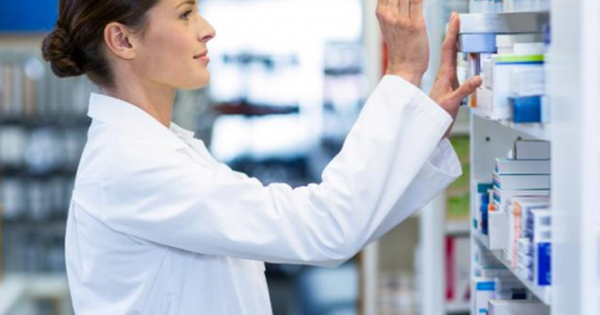
Pharmacy automation is not a new development — many pharmacies have integrated some degree of automation since the 1960s. But increased artificial intelligence and machine learning facilities, combined with the lower cost of automated systems, have put automation within reach for even smaller pharmacies. Read on to learn why so many pharmacies are moving toward automated systems for their work, what systems exist and what’s on the horizon.
The Benefits Of Automation
Some pharmacies have held onto the old ways of doing business. But as the benefits of automation grow clearer, even traditionalists have started to make the switch. These benefits include:
Increased speed: Even the most experienced pharmacist or technician is slower than a machine. Automation allows pharmacies to fill more orders more quickly while freeing up human beings to do essential tasks that can’t be automated, like engaging face to face with patients.
Greater accuracy: Accuracy is a major concern in the pharmacy world. Even the most seasoned or careful human can make mistakes. For many medications, an error in dosage can cause adverse effects or even kill a patient. Automating the process of measuring out medication greatly reduces the chances of error.
Greater security and confidentiality: Humans may make errors when contacting patients about their prescriptions or when following security protocols for drugs like opiates. For example, a pharmacy technician can leave too much information in a voicemail for a patient, while automated calling programs will consistently only verbalize information programmed by the pharmacy. For controlled drugs, the staff member may forget to log out a medication. Locked security cabinets can reduce this by requiring specific dispensing information before allowing access to the medication. Automation can eliminate these possibilities for error.
Types Of Automation
Pharmacies are incorporating several types of automation into their work, and many have venerable histories already. One of the earliest and most well-known examples of pharmacy automation is automated phone calls informing patients their prescriptions are ready to pick up.
Further examples include:
• Counting pills or capsules or measuring liquid medication
• Compounding
• Inventory management and reordering of medications when supply gets low
• Contacting physicians for refills or clarifications
• Transcribing patient or physician phone messages
• Entering or updating patients’ personal or insurance information
• Identifying potentially dangerous medication interactions
A Deeper Look
Exciting new developments in automation have brought the costs of software and machines down. Devices that were once off-limits to all but the largest pharmacies are now priced so that smaller facilities can afford them. Here’s an overview of some specific tasks and the devices performing them:
Dispensing medications: Dispensing medication is a common source of dangerous errors for pharmacies, and it’s a laborious task. Machines like TCGRx automate filling blister packs for patients, and Parata’s robots fill vials and pouches. Many modern systems are hands-free, allowing greater safety and sterility for the medication.
Syncing records: Traditionally, pharmacists have had to manually enter information about medication dispensing, even if it’s been automatically dispensed. Records are now commonly synced to centralized databases that manage the patient’s records once a medication has been dispensed, so there’s no confusion or additional steps.
Compliance: Pharmaceutical regulations are constantly changing. Systems like Omnicell check your pharmacy’s practices against regulations and alert you to noncompliance scenarios.
Dispensing pills at home: For many patients, accuracy of dosage while self-administering or remembering to take medications on schedule can be serious concerns. Pharmacists may take extensive steps to educate patients about their medication when they visit the pharmacy, but if a patient isn’t sure or doesn’t recall the instructions, all their work is undone. In-home medication dispensers, like the one created by Spencer Health Solutions, serve as in-home pharmacists, dispensing pills to patients and giving them instructions.
Future Frontiers In Pharmacy Automation
Pharmacy automation continues to grow by leaps and bounds. AI and machine learning provide exciting opportunities for changes within the industry.
Researchers have focused much attention on AI image recognition. While handwriting recognition has greatly improved just in the last five years, pharmacists still have to double-check systems that scan prescriptions to see whether there have been any errors in their transcription. As the software continues to improve, it’s likely that error rates will continue to decrease.
One of the most important automation frontiers involves patient responses to medications. As pharmacists report back about adverse reactions to medications, automated systems may be able to glean patterns (such as in interactions or contraindications) that humans aren’t as likely to catch. By harnessing the power of big data, systems may be able to advise pharmacists on potential risks to patients, even when the reason underlying the advice is unclear.
Finally, one of the largest concerns pharmacies currently have about automated medication dispensation is the risk of cross-contamination. One machine processing many different medications needs to be cleaned between each operation. Currently, this task falls to human pharmacy staff, although with time it’s likely that devices with a reliable, safe and thorough self-cleaning function will enter the market.
Conclusion
Some pharmacies have resisted automation. Pharmacists or other staff may be resistant to learning new systems when the old ones have functioned for so long. Still others may be concerned about the long-term viability of their jobs.
But pharmacies are quickly learning that they can’t afford not to automate at least some tasks. Automation increases a pharmacy’s efficiency while dramatically reducing its rate of error. It frees up human pharmacists to perform important tasks like interacting with patients face to face, which can’t be delegated to a machine.
As the costs associated with automation continue to drop, more pharmacies are realizing that they can’t afford to put off automation any longer. As new developments in automation emerge, pharmacies will become more efficient, cleaner and safer.
